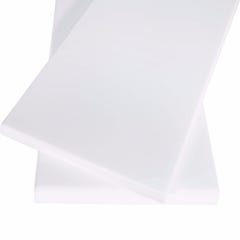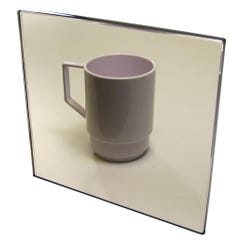Polycarbonate vs. Acrylic: Which is Better?
Matt Porter March 15, 2023 3 min watch
Polycarbonate vs. Acrylic: Which is Better?
Andrew 00:09
All right, so let's talk about polycarbonate. And I should say the brand name Lexan is very
popular. So Lexan is a brand of polycarbonate in the same way that Plexiglas is a brand name of
acrylic, right? So you kind of will commonly hear them, you know, used interchangeably. And
Lexan is popular enough that we'll get calls for customers going, Hey, I want this Lexan part. And,
you know, a lot of times we're going to go hold on, are you sure you know what you're asking for
right Matt. Let's talk about the pros and cons of and we'll eliminate the brand name for a second,
just talk about polycarbonate versus acrylic, and why someone might want one versus the
other.
Matt 00:46
Yeah, so there are definitely merits to each one. But one definitely outweighs the other in the
marine industry for how their applications are. The polycarbonate is harder than acrylic by
something like 30 times harder, it's more impact resistant. It's also better from a heat perspective.
They can tolerate higher heats up to somewhere around 240 degrees, working temperature. The
drawback to polycarbonate is that it is more scratch resistant and not UV stable. So it'll yellow
and show scratches.
Andrew 01:19
To be clear, polycarbonate does scratch more so it's less scratch resistant.
Matt 01:23
Did I say that the other way around?
Andrew 01:25
Yeah, I think so. I might have messed it up. But polycarbonate scratches more than acrylic.
Right so even though it's less impact resistant, it's softer on the surface.
Theo 01:32
And when we think about both parts was the first thing we consider right. It going to be a
tough marine environment there’s sand or salt. And you've got to make sure that it's going to stand up
to those scratches. It's got to stand up to that sunlight.
Matt 01:44
Right and that's where the acrylic really outweighs the polycarbonate and those great
windshields it does great as livewell lids, its lasts longer. It doesn't discolor it just holds up overall better
than polycarbonate.
Theo 01:54
Absolutely. And in other industries, you know, we do see a lot of polycarbonate being used
even on our shop floor. We've got some machine guards down there in front of the saw protecting
everybody something it's going to it's got that impact resistance, perfect for polycarbonate, not
something you want to see in acrylic.
Andrew 02:08
Yeah, where you know if something kicks off, the machine hits acrylic, it might break, you
know, shattered polycarbonate it's not, you know, but again in the marine environment it can be
stabilized. You know, it doesn't really have place and a lot of applications.
So yeah, you're generally when someone calls in and they say, hey, I'm looking for you Lexan polycarbonate, we almost in our head immediately skip and go okay, you want acrylic, you know and that's not to say that if they talk to us that no it's actually used for this that we do stock some polycarbonate and I can certainly make stuff out of that. But it’s worth understanding the basics when it comes to fabrication for the marine environment.











